All the Answers
Well-known member
Hybrid work redefines the workspace: what ultra-modern offices are like and how much it costs to design and rent them - Infobae

Source:
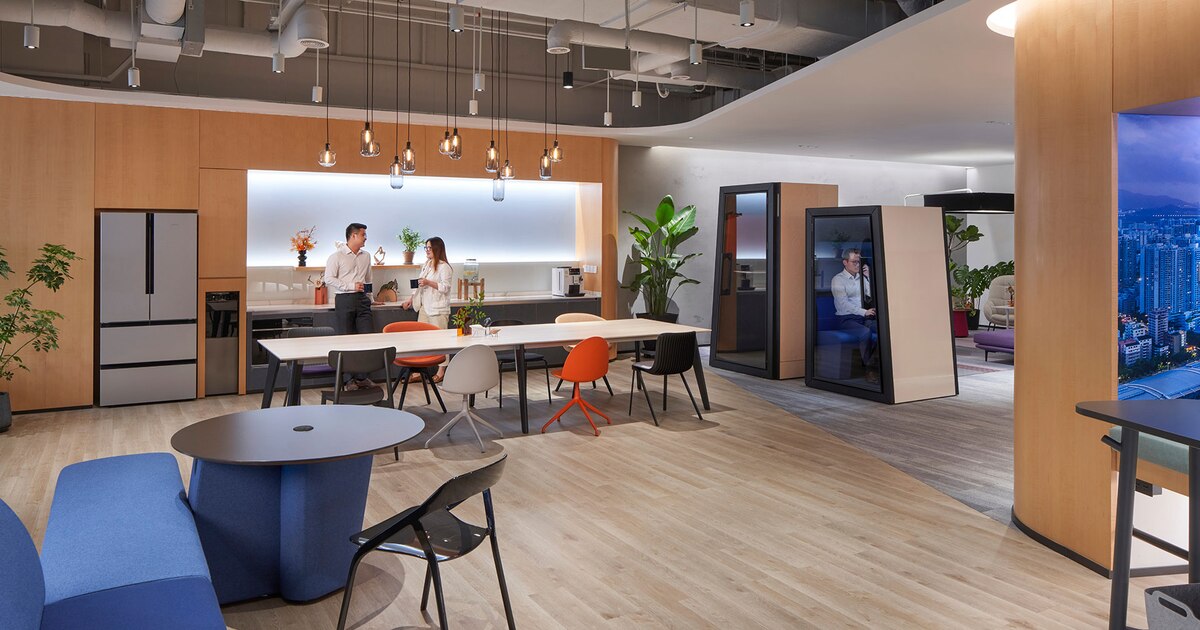
El trabajo híbrido redefine el espacio laboral: como son las oficinas ultramodernas y cuanto cuesta diseñarlas y alquilarlas
Con estilos vanguardistas los jóvenes y nómadas digitales prefieren entornos laborales flexibles. La adecuación de oficinas se enfoca en el bienestar y el rendimiento del personal
April 16, 2024
With avant-garde styles, young people and digital nomads prefer flexible work environments. Office adaptation focuses on the well-being and performance of staff
By José Luis Cieri
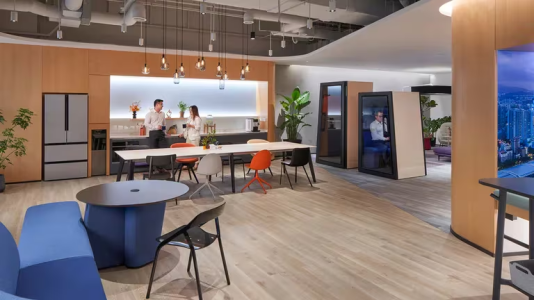
Young people, more familiar with technology, are the ones who most easily adopted mobility and remote work
Ultra-modern offices are being transformed to respond to the demands of post-pandemic work, focusing on the well-being and flexibility demanded especially by young people and digital nomads. The change responds to new paradigms and ways of working.
The old offices, full of desks and compartmentalized, decorated in corporate colors, no longer respond to new needs. Tasks are increasingly varied and collaborative and require spaces that support various ways of working: individually, in small groups and in interdisciplinary teams.
The use of new technologies accelerated the transformation. Companies are rapidly adjusting their work environments to stay competitive.
“The health crisis forced us to become mobile and remote. Today's offices require a diversity of spaces for a variety of tasks, similar to the layout as in homes. Well-being became a fundamental axis. Each space must adapt to the work culture of each organization. For example, facilitating agility, creativity and other key aspects depending on the company. Technology plays a crucial role,” said architect Alejandro Gawianski , CEO of HIT Group.
These spaces now prioritize collaboration and versatility, marking a move away from traditional design. The Mercado Libre offices in Saavedra and the Libertador Business Center, in Núñez, illustrate this evolution towards areas that favor interaction and autonomous work alike.
Today the function of the office is to facilitate the meeting. Social and collaborative spaces are key, as is privacy regulation to enable both focused work and uninterrupted interactions.
Gawianski added: “ The new generations demand spaces that promote their well-being. Companies are increasingly aware of the impact their workspace has on attracting and retaining talent. Therefore, offices that allow both work and personal tasks to be carried out are essential for these new generations. The conception of offices as neighborhoods , where activities that identify them and that attract them occur, becomes a promising strategy to make employees want to go to work."
Futurists
The reconceptualization of work spaces not only changes the physical structure of the offices, but also directly affects the choice of furniture and the general functionality of these places.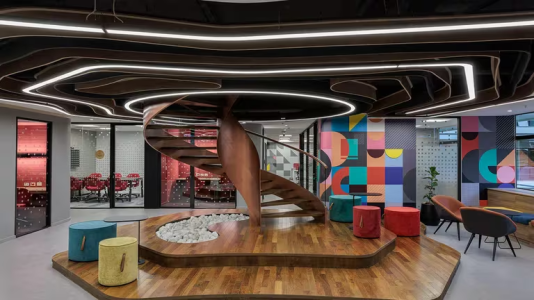
Avant-garde designs for offices that in some cases have a spaceship imprint (Photo Courtesy: MP Workplaces)
The incorporation of adjustable desks, private call booths and greater attention to personal comfort seeks to promote an ergonomic work environment conducive to employee well-being. This adjustment in design and furniture aligns with the consolidation of the hybrid work model, which combines in-person with remote work.
“The right balance must be found between the different workspace options – from workstations to focus rooms, cafe areas, small and large meeting rooms, phone booths, to areas for creative or relaxation meetings.” It is essential to satisfy the needs of the activities,” said Gawianski.
Adjustable desks
Height-adjustable desks are new in terms of workplaces, whose benefits are related to ergonomics and well-being, as they promote postural change, movement and personalization. The “pods” booths for telephone calls, which, in addition to being acoustic, allow them to be easily moved along with the rest of the furniture in the event of a move, that is, they improve the user experience and optimize the investment.The hybrid system is here to stay, however, there is no single model. Architect Ana Moreno , commercial director of MP Workplaces, noted that “each organization adjusted the number of in-person days necessary to keep teams aligned. Over time, employees also began to appreciate the benefits of coming to the office to interact with their peers.”
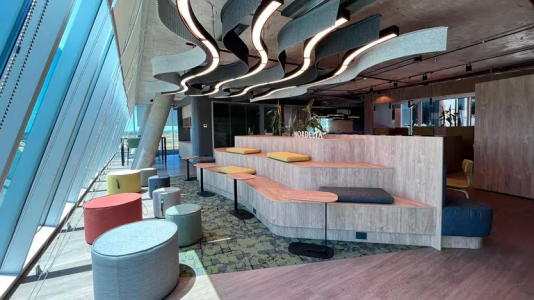
Natural light, vegetation and pleasant decoration are aspects that, in addition to contributing to the durability and resistance of the furniture, enhance a more pleasant and stimulating work environment.
Collaborative surfaces and costs
In the offices of this new era, it is key to have collaborative surfaces that encourage integration and teamwork.“But it is also necessary to have small spaces to make phone calls, hold virtual meetings, or simply to have a moment of privacy when you need to do a task that requires greater concentration,” Moreno explained.
Today, companies have various alternatives to traditional office spaces. Gawianski said that they usually offer comprehensive solutions that include everything from planning to management of office buildings, including the “space as a service” model that allows access to fully equipped work surfaces without initial investment, adapting to every budget.
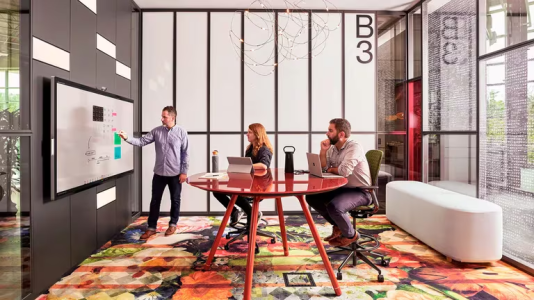
The modernity and surfaces designed with flexible furniture favor the dynamism of those who work in these ultra-modern properties (Photo Courtesy: HIT Group)
Moreno said: “At this moment it is a bit difficult to talk about values, given that the context is complex, and also depends on the characteristics of the building. The projects we currently have in progress are in a range of USD 800 to USD 1,200 per square meter, including furniture.”
Although there are also turnkey office design and equipment projects that start at USD 400 per m2.
Rental per day
The world of work faces a paradigmatic transformation in the concept and structure of offices.Iván Gauna , Co-Founder of OFFi, introduces a disruptive model called Blended Office, a solution designed to adapt to current demands for flexibility and efficiency. This model allows different companies to share work spaces, but not simultaneously, thus promoting a dynamic and personalized use of the work environment.
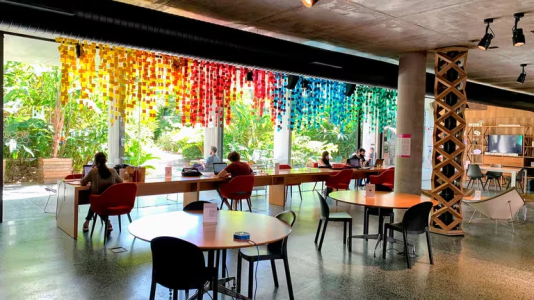
This system where spaces can be rented by the day not only provides economic benefits, but also aligns with a vision of the future where flexibility, sustainability and efficiency are fundamental in the labor market (Photo Courtesy: OFFi)
They give companies the possibility of reserving their own offices, just a few days a week on contracts of 12 months or longer.
“People do not need to go to the office to work, nor live in the same city or country where they have their company,” said Gauna, evidencing a paradigm shift in the labor market.
The dynamic prices of these new work spaces, especially advantageous on Mondays and Fridays in Argentina, together with advanced technology for data security and privacy, seek to meet the needs of an increasingly dispersed and digitalized labor market.
Gauna compares the traditional office model to a landline telephone in today's world, “it just doesn't work.”
This innovation comes at a crucial moment where, according to a JLL report for 2024, more than 55% of companies adopt hybrid work models, a sign of a transition towards less rigid schemes that are more in line with the expectations of new generations.
Gauna expanded: “Such diversification in the management of the workspace not only responds to the demand for flexibility, but also to an interest in reducing the environmental impact, making it easier for employees to work close to their homes.”
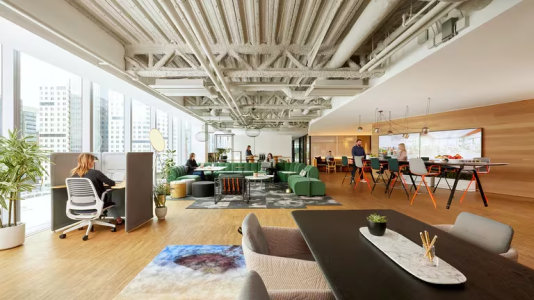
Working comfortably where social, meeting and private areas can be combined is key to promoting work interaction among employees who come to their workplaces in person.
In terms of infrastructure, the construction value of these modern offices ranges between USD 811 and USD 2,614 per m2, varying depending on the experience that is desired to be provided to the workers.
Work standing?
Innovations such as Standing Desks, digital branding and recreation areas become key in creating an enriching work environment in line with the expectations of generation Z and digital nomads.This new approach to the work environment not only affects the physical structure of offices but also business culture, giving rise to work spaces that include everything from massage rooms and gyms to virtual reality experiences. These innovations seek to answer the question: “If I can work from home, why should I go to the office?”, in the words of Gauna.
The rental of these spaces is presented as an economical and functional solution for companies, with an average daily cost of USD 495 for an office of 50 people in Buenos Aires.
“Companies continue to require their own offices, although not necessarily every day of the week. In addition, they are opting for decentralized locations, adapting to the geographical distribution of their employees,” Gauna concluded.

